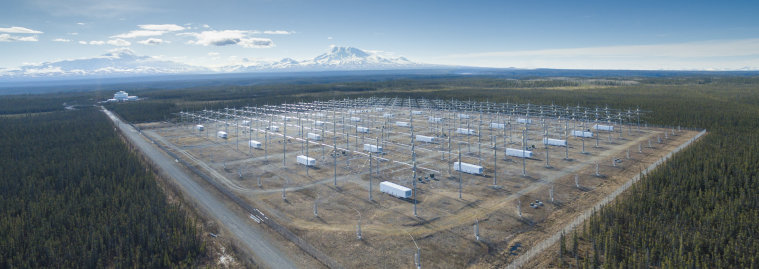 Many thanks to Chris Fallen (KL3WX), Assistant research professor in the University of Alaska Fairbanks Geophysical – Space Physics group , who shares the following update in reference to upcoming HAARP activities:
Many thanks to Chris Fallen (KL3WX), Assistant research professor in the University of Alaska Fairbanks Geophysical – Space Physics group , who shares the following update in reference to upcoming HAARP activities:
Regarding this February 2017 campaign, HAARP will be operating from 19 to 22 February.
Specifically, experiments will begin daily sometime after 1800 hours 2/19 UTC. My experiments will be the last each day (local Alaska time) and are scheduled to start at 0330 hours on 2/20, 2/21, and 2/23 UTC; and at 0430 hours on 2/22.
Experiment times and frequencies are subject to change for various reasons, particularly in response to ionospheric conditions shortly before each experiment.
I will do my best to update https://twitter.com/ctfallen in real time.
Operations are very active times and I will be monitoring conditions and equipment so generally speaking, for my artificial aurora experiments, your best bet is to search around 2.7 MHz +/- 100 kHz given current conditions.
For the Luxembourg effect experiments, I will try to keep the two frequencies separated by about 1 MHz, which means that they will occur earlier in my experiment window rather than later, when the ionosphere is more dense.
Many thanks for the update, Chris.
SWLing Post readers viewing our website should find your Twitter feed embedded below. Those reading via RSS or our Feedburner email feed, can click here to view updates on Twitter.

Nothing was to see/hear of the Luxemburg experiment here.
FakeAurora could again be identified here tho (tiny 3dB bump over the noise):
3:54 CW 2.80 comes on
3:56 CW 2.80 again
3:58 CW 2.82 90s
4:00 CW 2.84 4:01:30 off
4:02 rinse and repeat…
…
4:32 CW 2.84
4:33:30 End of the show
Condx were a bit worse than yesterday on that band. QTH is 500m off the North Sea coast in northern Germany, dipole in V-beam configuration pointing due W, 18-24ft high .
Solar windy conditions are not helping … Local conditions observed with the on-site digisonde today were indeed generally worse than yesterday.
But still, despite the terrible antennas used on both sides, your QRP signal made it all the way over to Europe! 😀
Hard to tell if that faint line on 4.44Mhz is yours, sitting on the edge of a OTH signal with a much louder CODAR over it. If you were aiming for DX, I’d say the elevation angle of your antenna sucks 🙂
But hey, at least I can say nasty things to people again, then telling them that “HAARP made me say that”. 😀
2:59UT signal off, it was definitely your line on the waterfall, cross-checked with webSDR in Montana. Signal was like 3dB over the noise (-120dBm) here.
There were reports of successful signal reception from British Columbia and California. Anything further east?
Missed the Luxemburg test, but I could receive the carriers from the aurora experiment in northern Germany, albeit quite faintly (5-10dB above noise).
Yes, there were confirmed reports from Michigan and Georgia. Also Finland, but that might be over the top.
“Over the top”–! Indeed!
I woke up early (5 am local time) to try catching this experiment but heard nothing here in Romania. 🙁 There was no signal whatsoever on 2800 kHz and on 3300 kHz there were a couple of Italian hams talking on LSB. Later I looked on an azimuthal map and noticed the path from Alaska to my location goes straight through the North Pole, so no wonder there was no propagation.
Great fun! I didn’t get to the dials until 02:55, so missed the earlier higher frequency transmissions. In any case, good strong signals, but sometimes faded down to quite weak. The tones continue. An open carrier just now (03:45) was at S9+ 10 to 20, whereas most of the reception was in the S7 to S9 range into Victoria, BC with tones, music (Row, row, row your boat, and Pachelbel’s Canon). Appears that the plug may have been pulled at 03:47 tonight. Thanks a million, Chris!!!
You’re welcome! Thank you for participating and stay tuned!
aw too bad, didn’t expect that so soon. I wanted to buy some big external disks so I can record sufficient amounts of the spectrum 0-8MHz and maybe around 15 MHz during the tests. Now it’s Saturday and the big disk shop is closed. 🙂 I wanted to check if there are any effects to see on e.g. VLF while not missing anything on the tx frequency.
Campaign continues through evening of 22 February Alaska Standard Time!